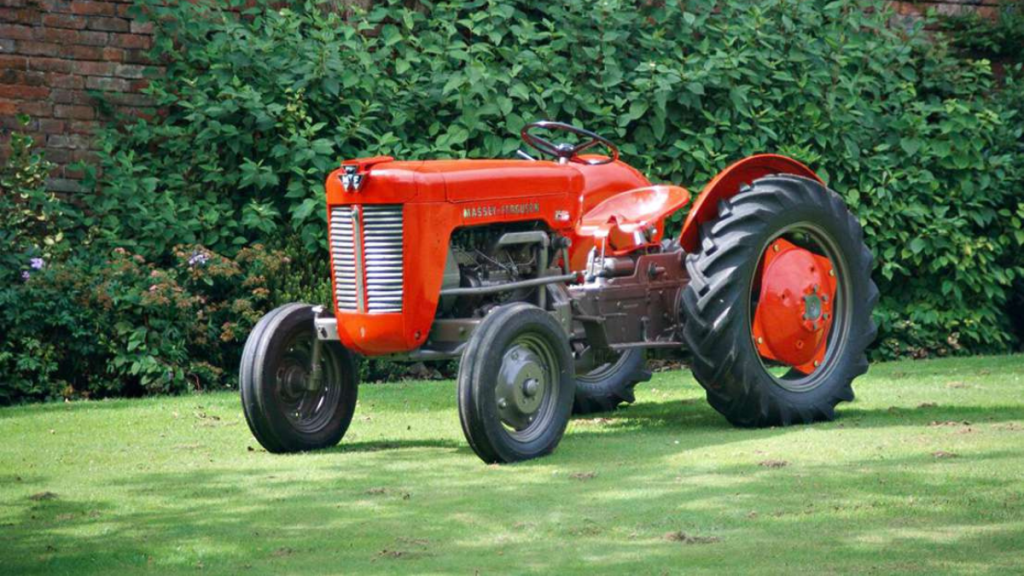Restoring a vintage Massey Ferguson tractor is more than just a hobby—it’s a hands-on journey into agricultural history. These classic machines, built with rugged reliability, often hold sentimental value for families or enthusiasts. However, bringing one back to life takes time, patience, and the right tools. While mechanical knowledge is helpful, having the proper equipment on hand makes the process safer, more efficient, and much more enjoyable.
One of the first steps before starting any restoration project is assembling a solid collection of basic hand tools. A full set of wrenches, including both metric and imperial sizes, is crucial since many vintage Massey Ferguson tractors use a mix of both standards. Socket sets, screwdrivers, adjustable spanners, pliers, and torque wrenches form the foundation of your toolkit. These are the tools you’ll reach for repeatedly, whether you’re removing an oil pan, disassembling a carburettor, or tightening a head bolt to spec.
Safety should never be overlooked when working on heavy equipment like tractors. Lifting and support tools are essential for managing the considerable weight of these machines. A heavy-duty hydraulic floor jack is necessary for raising large components like the front axle or rear housing. Once lifted, axle stands or jack stands should be placed under the chassis to provide stable support—never rely on the jack alone. For tasks like removing the engine or gearbox, an engine hoist (commonly called a cherry picker) will allow you to lift heavy components safely and with precision. These tools aren’t just convenient—they’re vital for preventing injuries and accidents.
Vintage tractors have often spent decades in barns, fields, or sheds, gathering years’ worth of grime, rust, and dirt. Cleaning and preparing these machines for restoration is a critical and often underestimated step. Wire brushes, scrapers, and degreasers will help remove layers of old grease and oil. A pressure washer can make quick work of exterior buildup, while an angle grinder with a wire wheel or a sandblaster is useful for removing rust and flaking paint from metal parts. In some cases, using rust converters can salvage parts that might otherwise be discarded.
Disassembly often reveals components that haven’t been touched in years—sometimes even rusted or seized in place. This is where specialty tools come into play. Gear pullers help remove stubborn pulleys and bearings, seal drivers make reinstalling oil seals easier, and a compression tester is invaluable for diagnosing the health of an old engine. These tools may not be used every day, but when you need them, they can save hours of frustration. They also help ensure you don’t damage critical parts during the process.
Creating a well-organized, functional workspace is another key element of a successful restoration. A sturdy workbench with a mounted vice provides a stable platform for tasks like filing, cutting, or pressing. Adequate lighting—whether overhead LED shop lights or portable task lights—makes it easier to spot wear, cracks, or subtle alignment issues. Keeping fasteners and small components organized with labelled bins or trays is an often-overlooked detail that helps avoid reassembly headaches later on. And perhaps most importantly, having access to a service manual for your specific Massey Ferguson model is indispensable. These manuals offer detailed diagrams, specifications, and procedures that guide you through even the most complex repairs.
In the middle of any successful restoration project is finding the right parts. Replacing worn, broken, or missing components with quality replacements is what turns a non-functional machine into a working piece of history. This is where Masseyparts becomes an essential partner in the restoration process. Specializing in vintage Massey Ferguson parts, they offer everything from engine kits and gaskets to electrical components and filters. With a reliable source of parts, you can avoid delays caused by searching for hard-to-find items or risking substandard replacements.
As your restoration progresses, it’s worth remembering that patience and preparation are just as important as having the right equipment. Some parts may take time to track down. Some repairs may require multiple attempts. But with a comprehensive toolset, an organized workspace, and a trustworthy supplier, the experience becomes far more manageable and rewarding.
Restoring a vintage Massey Ferguson tractor is a meaningful endeavour. It’s a way to preserve agricultural heritage, build hands-on skills, and even create something that can be passed down through generations. And when done with care and the proper tools, it transforms from a mechanical task into a fulfilling labour of love.




